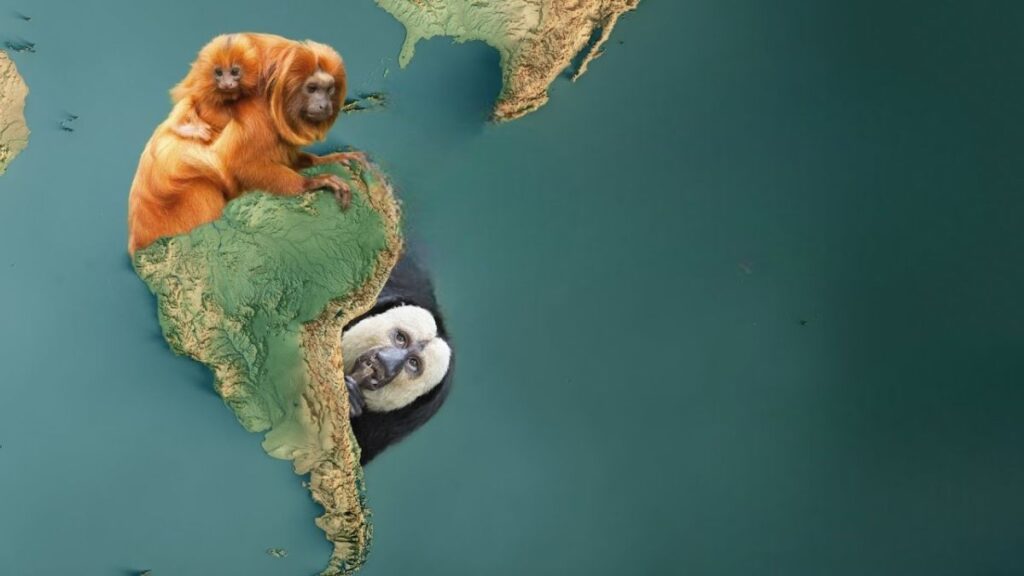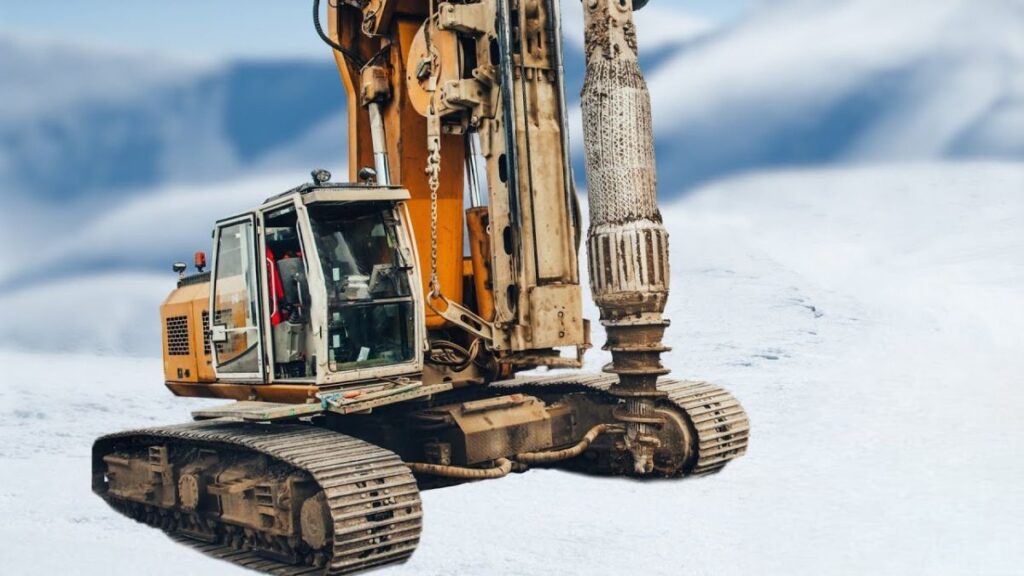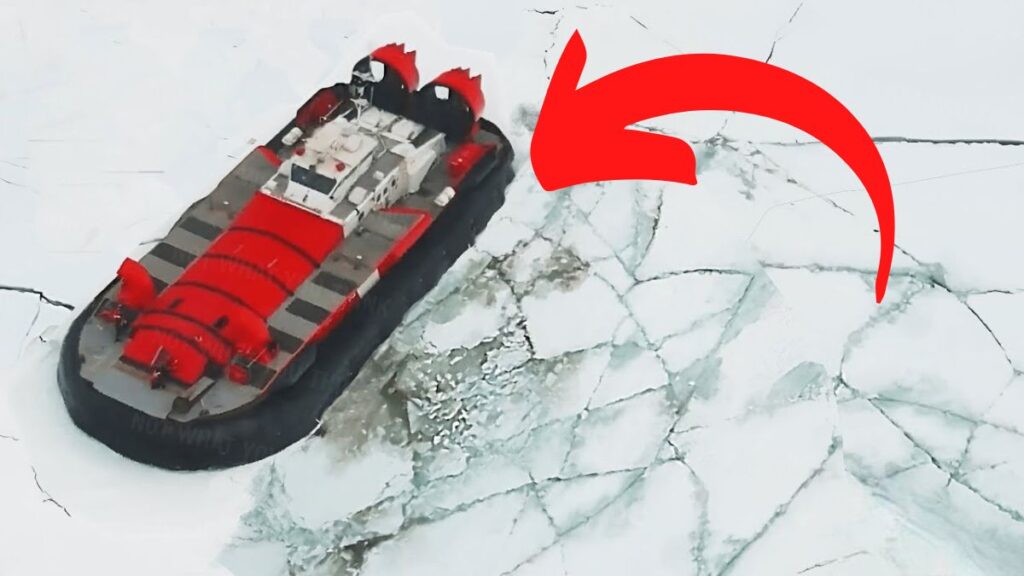
In the 1950s, when hovercraft were first developed, they were viewed as futuristic machines that could traverse anything and everything and had no limit to their capabilities.
Because of their “fan” and “sea” appearance, they were envisioned as the future of transportation.
Furthermore, due to their ability to simply fly above water, hovercraft were hailed as “seasick”-free vehicles.
However, their seamless ability to switch between land and water was their greatest advantage.
They were excellent for amphibious military operations due to this.
Ironically, the military had put this idea on hold at first, only to come back to it later with other ideas that called for massive ships weighing 3,000 tons.
They came very close to a Navy capable of 100 knots, but that never happened.
The Landing Craft Air Cushion, or LCAC, was designed to be used on amphibious ships and even giant hovercraft carrier ships, which is kind of an ingenious idea, while Soviets developed the world’s largest hovercraft, the Zubr Class.
The enormous hovercraft were also used for commercial passenger ferries in addition to their military applications; however, a number of technical difficulties prevented the large ones from remaining in operation.
Hovercraft may appear to have failed, but in reality, they are indispensable in certain applications, such as amphibious operations, search and rescue, and transportation over difficult terrain.
However, what happens if the hovercraft’s engine breaks down in the middle of the water? Also, hovercraft can’t be used to break up ice, contrary to popular belief.
Using a CD to demonstrate how hovercraft operate is the simplest method.
This is what happens when you let a balloon that has been inflated deflate through the CD’s center.
According to Newton’s Third Law of Motion, every action has an equal and opposite reaction.
The CD would then be lifted off the surface by an opposing upward force in this instance.
Hovercraft are machines with a ground effect, and that’s what they are.
To stay above the ground, you need less thrust the closer you are to the ground.
This is true for hovercraft, airplane, and helicopters alike.
However, the only difference is that hovercraft cannot hover outside of ground effect, unlike aircraft.
Under the hovercraft, enormous fans circulate air, causing it to hover like the CD.
Additionally, forward thrust is provided by the enormous propellers atop the hull.
Either the propellers or the rudders behind it can be turned to steer.
Additionally, when a hovercraft is docking or undocking from a ship’s well deck, bow thrusters can be used to improve control, particularly in tight spaces.
Christopher Cockerell, who created and presented a model hovercraft to the British military, set the stage for modern hovercraft.
They were so enamored with it that they labeled the idea of hovercrafts as a “secret” right away, but they quickly lost interest in it.
Cockerell presented his invention to the National Research Development Corporation after the hovercraft was declassified, and the corporation agreed to fund the SR, the first full-scale prototype.
N1, which Saunders-Roe constructed in eight months.
The prototype performed mostly as expected during testing, with the most significant limitation being the relationship between hover height and weight.
Adding four men to the SR was discovered during tests.
From a maximum hover height of 9 inches, the 700-pound N1 lowered the hover height by 1 inch.
The hover height was only reduced by 4 inches when 20 Royal marines were added to the hovercraft, each of which weighed 31% of the hovercraft’s weight.
As a publicity stunt, twenty Royal Marines participated in this demonstration instead of just twenty people to regain the military’s interest in the hovercraft.
The SR also pulled a publicity stunt when Calais and Dover, N1 made history by crossing the English Channel in just two hours for the first time.
It was meant to get people’s attention and get money for developing this new technology.
Despite the fact that the term “hovercraft” refers to any air-cushioned vehicle, Saunders-Roe, an ex-British aero-marine engineering company, owns the trademark for the term.
However, in addition to receiving a lot of publicity, the growth of SR.
Two significant advancements for all future hovercraft were brought about by N1.
The first involved blowing air from the edges of the craft rather than the center.
It turned out to be less effective to blow air from the middle of the hovercraft because the air would easily escape from the sides.
However, by blowing air from the sides toward the center, more air is trapped under the craft, which improves efficiency and enables the use of a smaller engine or a higher hover height.
However, this performance boost was insufficient.
The SR.N1 still had a hover height of only 9 inches, which was too low to be useful.
The waves have the potential to easily surpass the SR, even on days with relatively low winds.
Given N1’s hover height of 9 inches, a solution was required.
Latimer-Needham, a Royal Navy officer, came up with the idea for a skirt, which is a flexible fabric that wraps around the hovering surface to keep the air in. This was the second innovation.
the skirt that was added to SR.
From 9 inches to 42 inches, the hover height increased by more than four times.
Although initially it appeared that the hovercraft’s skirt was a lifesaver, it eventually turned out to be its Achilles’ heel as well.
This raises the question of what would occur if the skirt inflation failed or the engines stopped working.
Underneath the hull of a hovercraft are still watertight compartments or enormous pontoons.
Therefore, the boat-like vessel is perfectly at home even without an air cushion.
Probably the SR hovercraft is the most well-known one.
Six of the N4 class of passenger ferries traveled the English Channel from 1968 to 2000.
The SR, in its initial configuration.
The upgraded ferries were able to transport as many as 60 cars and 418 passengers across the channel in approximately 30 minutes, while N4 could accommodate 30 cars and 250 passengers.
However, the reason the enormous hovercraft ceased serving as passenger ferries would surprise you.
The cabin was so loud that passengers had to shout at each other to hear each other.
During rough seas, the ride was also extremely bumpy, and half of the passengers became seasick.
It turns out that in bad weather, you can get seasick on a hovercraft.
However, for the majority of passengers, riding the hovercraft was still an exciting experience!
Actually, the SR. Hoverloyd, Seaspeed, and other N4 operators were booked months in advance!
Everyone wanted to go on the SR trip.N4, which was thought to be new in the future.
Two major incidents involving passenger hovercraft occurred.
In 1972, a more compact SR.
While traveling between Southsea and the Isle of Wight, strong winds caused the N6 to capsize.
The Princess Margaret Hovercraft slammed into a pier at the entrance to Dover Harbour in March 1985, causing another accident during rough seas.
Tragically, four passengers died.
However, neither of these incidents nor the service’s cancellation were the cause of it.
The fact of the matter is that extremely large hovercraft were a technological dead end.
Fuel might have been the primary reason.
The SR, for instance 1000 gallons of fuel were used by N4 every hour.
The oil shocks of the 1970s prevented the widespread adoption of giant hovercraft, despite the fact that they may make economic sense when gas prices are low.
Reliability was another issue.
Hovercraft could cross the channel with waves as high as 12 feet, so crossings were canceled whenever the weather got bad.
And are you aware of the hovercraft’s Achilles’ heel?
It turned out that the skirt was getting worse and needed to be fixed almost every time it was taken out.
However, despite improvements to the skirt, it still required costly weekly maintenance.
The novelty eventually waned, and trips that had been booked months in advance became void of seats.
However, this is the final blow to the SR fleet.
N4 was introduced after duty-free shopping ended in 1999 and the Channel Tunnel opened in 1994.
The Isle of Wight Hovercraft is the world’s last commercial hovercraft service, operating regularly between Portsmouth’s Southsea and Ryde.
Hovercraft are only useful in very specific circumstances, in fact.
Using a ship is a much better option when hauling a lot of cargo during any seastates.
Nothing beats a ground vehicle for traveling on land.
The question is how frequently do you actually need to travel over ice, swamps, or the sea to reach land?
Not all that often in settings other than military.
Hovercraft are clearly used for search and rescue operations in difficult-to-reach locations and during floods.
Even the maintenance of the light bulbs on navigational buoys makes use of them.
However, hovercraft are utilized in a distinctive manner in Canada, where I reside.
Along the St. Lawrence River, icebreaker hoverboats operated by the Canadian Coast Guard are in use.
As the ice melts in the spring, water flows downstream, and flooding can occur if the river’s mouth becomes clogged.
Therefore, preventing the formation of ice in particular locations is crucial.
The issue is that hovercraft are used instead of conventional icebreakers because the river’s shallow waters prevent them from doing so.
Hovercraft, on the other hand, break the ice in a completely different way than icebreakers do.
The distinctive spoon-shaped bow of many icebreakers is constructed with a toughened hull and internal frame.
The icebreaker can slide and ride up on thick ice thanks to its curved bow, and then the ship’s enormous weight breaks through the ice.
In contrast, hovercraft “wake up” the ice.
A wake in the water caused by the cushion of air that leaves the hovercraft creates a wave that travels beneath the ice.
A large enough wave can raise an ice sheet high enough for it to break under its own weight because ice is rigid.
In order to break thicker ice, the hovercraft’s forward motion and some turns can make the wave bigger.
The military continues to be one of the largest users of hovercraft, in addition to search and rescue organizations located all over the world.
The majority of military organizations use hovercraft as landing craft to connect ships to land.
The fact that hovercraft can move from water to land without stopping is the primary advantage that hovercraft have over conventional amphibious vehicles.
There are, however, two restrictions.
Military hovercraft cannot carry excessive amounts of equipment without becoming unmanageable.
They are capable of carrying a tank, but in that case, they are only carrying one tank.
Unless, of course, it’s a Russian one that can carry three tanks.
The second limitation is that they use a lot of fuel compared to other forms of transportation, which, as was mentioned earlier, was one reason passenger ferries were taken out of service.
Because of this, hovercraft are only utilized when absolutely necessary.
The US Navy tried out Surface Effect Ships, which were a hybrid of a hovercraft and a catamaran, in the 1960s and 1970s.
Only a small portion of the vessel remained underwater when the air cushion was utilized, either the waterjets or the propellers.
The Surface Effect Ship’s top-secret requirements called for it to be able to transport a tank and 100 marines onto a beach at speeds of more than 80 knots.
The SES 100A and SES 100B, each weighing approximately 100 tons, are two 1/10th scale versions of the 3,000-ton concept that were constructed as part of this project.
During one of the tests, the SES-100B was able to operate in waves as high as 6 feet and reach speeds of more than 96 knots.
In reality, the US Navy intended to operate at 100 knots.
However, that never occurred.
In 1980, the 3,000-ton hovercraft concept was put on hold.
In the meantime, a super hovercraft was being developed on the other side of the world—yes, I said flat earthers.
The Zubr-class hovercraft, which literally translates to “bison” in Russian, is a beast.
Up to 8-foot waves can be handled by it.
With a 555-ton load capacity, this hovercraft is the largest in the world.
As can be seen in this image, Zubr is a colossal beast.
The hovercraft is inadvertently making a stop at a beach in Russia to buy supplies, most likely vodka, and the beachgoers appear to be completely unimpressed.
During testing, the Soviet-designed Zubr was able to reach a speed of 74 knots.
Having said that, it typically operates at a speed of 60 knots because going too fast can cause stability issues.
However, the feature that restricts a hovercraft’s top speed is unique to this type of vehicle.
The front of the skirt begins to collapse at a certain point as the hovercraft accelerates through the air and encounters air resistance.
The air bubble that keeps the boat above the water disappears as a result.
The hovercraft’s maximum speed is restricted by the skirt’s capacity to withstand air pressure.
Zubr can cross barriers as high as six.
5 feet tall, can carry up to 140 troops and three tanks or ten armored vehicles.
Additionally, it is the only armed military hovercraft.
Two gatling guns and two retractable rocket launchers are part of Zubr’s arsenal for taking out the beach defenses.
The ship’s two internal engines produce the air needed for the air cushion, and the three engines at the top provide the thrust necessary to move forward.
The enormous hovercraft also needs a lot of water, using up 9
From its 56-ton fuel tank, five tons of fuel per hour.
Zubr’s propellers actually come from Tu-95 bombers.
Greece and China each purchased and operate four hovercraft of the Zubr class, while Russia currently operates only two of them.
American LCACs, which each have a displacement of 182 tons, are significantly smaller than the two enormous beasts operated by Russians.
LCACs do not have weapons and can only move one tank or up to 60 tons of cargo at a time.
Up to 73 Ship-to-Shore Connector air-cushioned vehicles with a maximum payload of 74 tons or 145 marines are currently replacing the 97 LCACs that were built.
The new hovercraft would look a lot like the LCAC, with major additions like a fly-by-wire cockpit, more powerful engines, and a new skirt design.
LCACs are typically stationed on amphibious assault ships, but they can also be deployed on other, significantly more exotic ships.
There is one more void that requires filling.
LCACs cannot communicate with large cargo ships.
They do not have a way to move cargo between the two.
The Expeditionary Transfer Dock ships, or ESD, enter the picture at this point.
Two ESDs are in the US Navy: USNS John Glenn and USNS Montford Point
Their primary function is to serve as an autonomous pier.
With the assistance of a vehicle transfer ramp, large-draft ships would be able to load vehicles and other equipment onto the ESDs.
The vehicles and equipment would then be transferred to the shore by LCACs.
This is especially helpful in situations where port facilities are missing or have been destroyed.
These ships are vulnerable because they have no defenses at all against missile attacks.
This is the reason why the US Navy initially considered arming these two ESD ships.
However, in 2022, despite the fact that both ships still had decades of service ahead of them and could be of great assistance in the event of a conflict with China in the Pacific, the Navy requested that they be retired.
Even though ESBs are capable of making as many as two dozen trips to the shore while transporting more than 70 pieces of equipment, this is only possible in conditions of fair weather.
Because they are unable to securely connect via the ramp to the sealift vessels, ESBs are unable to function in waves higher than three feet in height.
Compared to the Lewis B Puller class, which can utilize up to four CH-53 helicopters, this is a significant limitation.
This is why the US Navy wanted to retire the two ESD ships, but in December 2022, Congress rejected that proposal.
The thing is, ESDs work great for conflicts with low intensity.
They can help free up larger amphibious assault ships with well decks and LCACs so that they can operate in waters that are more dangerous.
$2 was spent on the massive amphibious assault ships.
5 billion dollars, but an Expeditionary Transfer Dock can be built for $500 million by removing the centerpiece from an Alaskan oil tanker and giving it the ability to ballast up and down.
Having said that, hovercrafts and their variants are still an essential component of any military for amphibious operations that have the potential to defeat the adversary and, in Canada’s case, to break the ice!

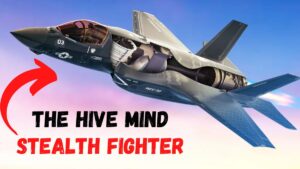


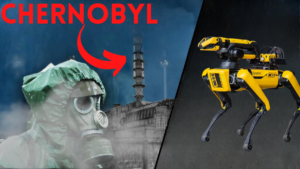
![Moon Jellyfish has [ Hidden Secrets ] You don't know moon jellyfish](https://spaceupper.com/wp-content/uploads/2022/11/1-1-300x169.jpg)
